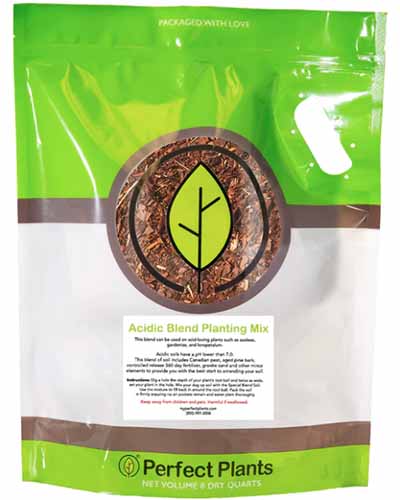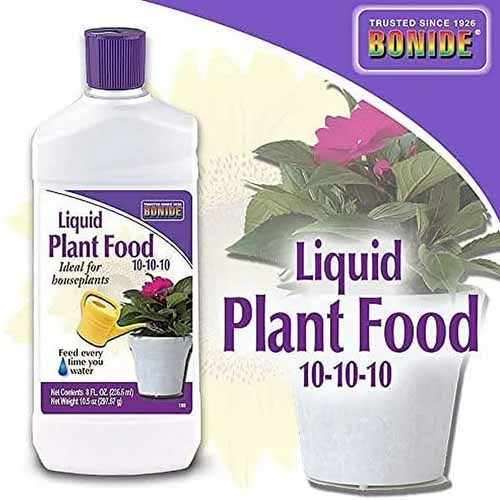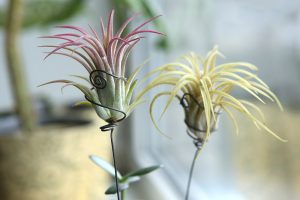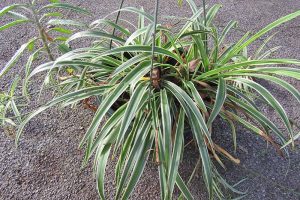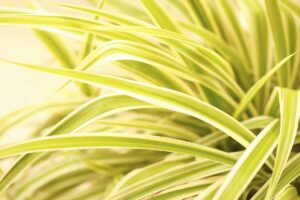Exacum affine
Persian violets (Exacum affine) are adaptable biennial or short-lived perennials commonly grown as houseplants or as annuals.
These pretty plants grow between six and 12 inches tall and feature small blooms ranging from deep indigo to violet or white, tucked neatly beside shiny green leaves.
The flowers have a sweet, refreshing scent that is not overwhelming.

We link to vendors to help you find relevant products. If you buy from one of our links, we may earn a commission.
Persian violets are relatively easy to propagate and maintain, and are nontoxic, making them ideal for indoor cultivation in homes with pets and children.
Read on to learn more about how to care for these colorful flowering plants.
What You’ll Learn
What Are Persian Violets?
Persian violets, also known as German violets, grow between six to 12 inches tall with a spread of seven to eight inches, and boast compact indigo, violet, or white blooms with bright yellow pollen masses in the center.
The blooms are surrounded by dark green, waxy leaves arranged in an opposite fashion which provide a pleasing backdrop for the lovely blooms and really make their colors pop!

Persian violets are native to Socotra, a small island in the Yemen archipelago.
Socotra has a subtropical climate with hot, humid summers, and mild winters that usually never dip below 60℉. In their native habitat, Persian violets grow in mountainous, rocky terrain.
If grown as potted plants indoors, Persian violets prefer temperatures ranging from 60 to 80℉. However, they can withstand temperatures as low as 55℉.
They can also be grown as a lovely annual ground cover or outdoor hanging plant in cooler regions.

Whether grown indoors or outdoors, these plants bloom from late spring into summer and will occasionally rebloom in early fall.
Despite their name and appearance, these plants aren’t related to African violets at all.
Persian violets are from the Gentianaceae family, which includes plants such as gentians and meadow pinks.
Additionally, they’re unrelated to plants in the Viola genus which are also commonly referred to as violets.
Persian Violet Propagation
You can propagate Persian violets by sowing seed or taking stem cuttings.
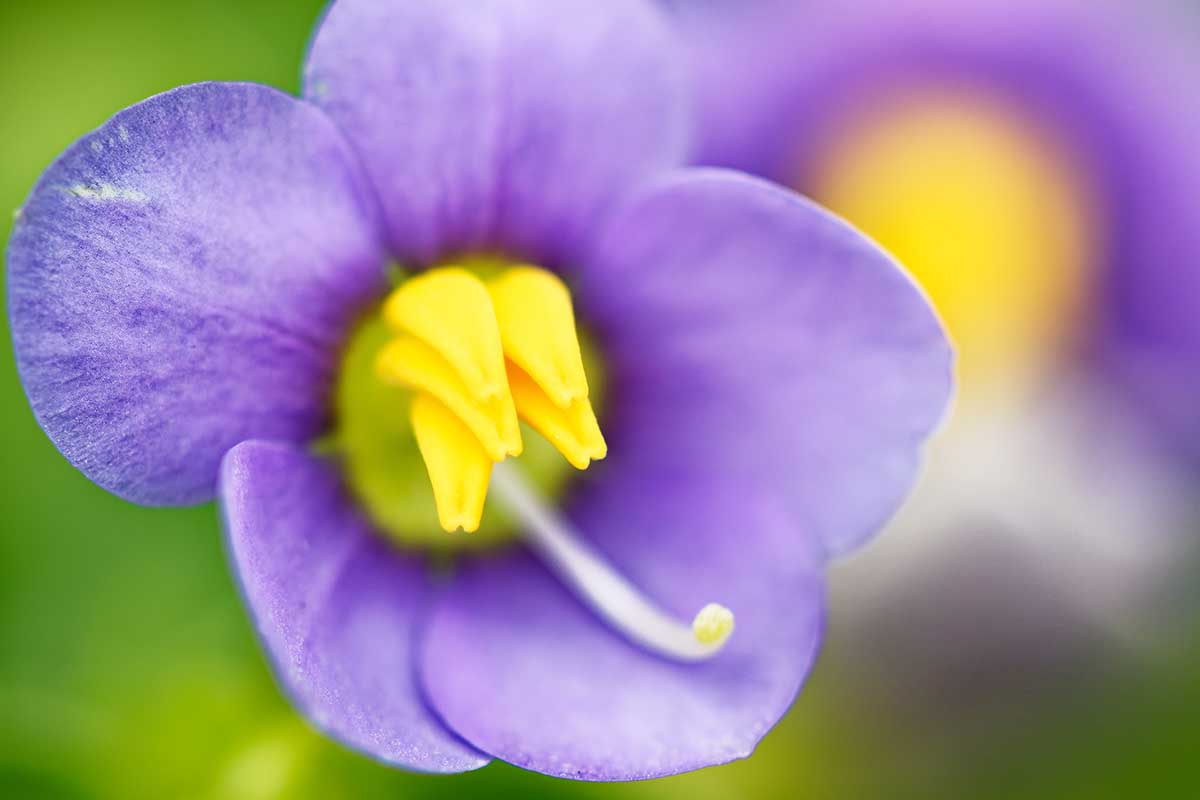
Both cutting and seed propagules grow quickly when provided with moist, humid conditions and well-draining soil.
The primary goal with either method is ensuring that your seeds and cuttings stay moist and warm so that you can mimic their native climate.
From Seed
Let’s start with seed propagation, which you can do at any time of year if you are growing indoors.
I would recommend starting your seeds in individual four-inch pots, though you can use a seed-starting tray if you prefer.
Begin by filling your pot or tray with a seed-starting medium that’s moisture-retentive and well-draining.

Seed Starter Natural Potting Soil Mix
If you need a recommendation, I use this one from the Midwest Hearth Store, available via Amazon.
Persian violet seeds are very tiny, plus they need light to germinate, so burying them in soil isn’t necessary.
Simply sprinkle a few seeds on top of the soil, water them in gently, and place the pot or tray in a warm, sunny location.
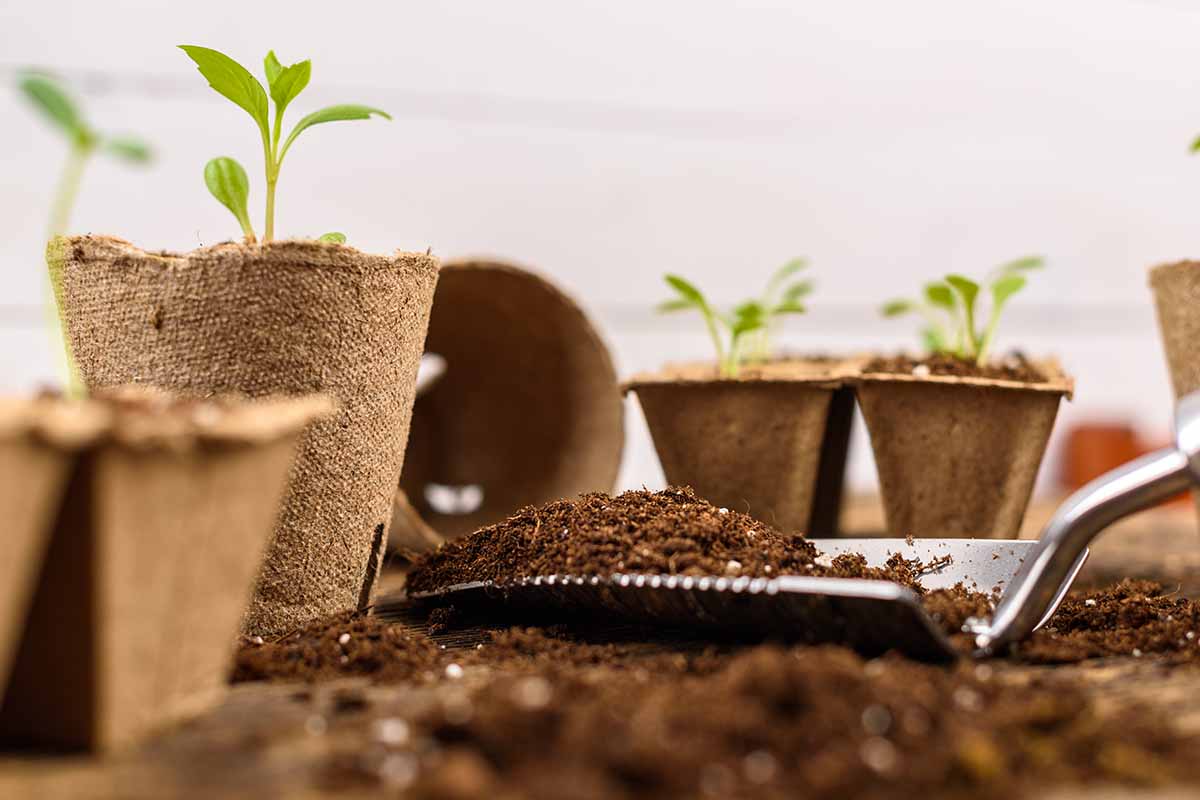
Maintain a humid environment for the seeds by placing a plastic baggie over the pots – or a humidity dome, if you have one.
In terms of temperature, set them in a location that’s between 72 and 79℉ to ensure germination. If you need to, you can use a heat mat.
Keep the soil evenly moist, but not waterlogged.
You can expect germination after two to three weeks. When the seeds have germinated, remove the plastic baggie or humidity dome, and continue to provide even moisture and warmth.
From Cuttings
Persian violet stem cuttings need a similar environment to seed starts – warm, moist, lots of light. You can take stem tip cuttings at any time.
You can start your cuttings in a 50:50 ratio of sphagnum peat moss and perlite media.
Persian violets like an acidic media, with a pH of 5.0 to 5.5, and peat moss will provide that. Fill a four inch pot with your chosen media before taking your stem tip cutting.
To start, find a sturdy stem from the parent plant that has at least two nodes. These nodes are where the roots will eventually sprout from.
Using a sharp knife to avoid crushing the vascular system, take a cutting that’s three to four inches long.
Gently pinch off the leaves from the bottom one and a half to two inches of stem.
Before placing the cutting in the media, you can coat the cut end in rooting hormone to help promote root growth – but it’s not essential.
Bontone II Powdered Rooting Hormone
If you don’t have growth hormone handy, you can find Bontone II Powdered Rooting Hormone available from Arbico Organics.
After you have taken your cutting and applied rooting hormone, if using, simply poke a hole one and half to two inches deep into the soil before sticking the leafless part of the stem inside.
Pinch the soil around the cutting to ensure stability. Cover the pot with a plastic baggie propped up so that it doesn’t interfere with the cutting or use a humidity dome. Set the pot in a warm, bright location and keep the soil evenly moist.
You can check for rooting by giving the stem a gentle tug after a week or so – if you feel resistance, it’s an indication that roots are forming.
Transplanting
Whether you have propagated your own plants or purchased a nursery start from the store, you’re going to need to pot it up.
When choosing a new pot for your Persian violet, it is important to give the roots plenty of room to grow. I would suggest picking a pot that is one to two inches bigger than the existing container the plant is growing in.
With this in mind, a six- to eight-inch pot will serve your plant well. Be sure to get a saucer that is a bit larger than the bottom of your pot to sit underneath it and catch excess water.
These plants like slightly acidic soil, with a pH of between 5.0 and 5.5 which can be provided by a perlite and sphagnum peat moss mix, or a specialty soil mix like this one from My Perfect Plants.
To prepare your pot for transplanting, fill it with one inch of potting media.
Then, gently grab hold of the base of your plant with one hand and shimmy it out of its existing pot.
Place the root ball into the new pot and add soil until the sides and top are filled in. Make sure the plant is sitting at the same height as it was in its original container.
Finally, water deeply at soil level until water begins to fill up the saucer underneath the pot. Discard the excess water.
How to Grow Persian Violets
Since Persian violets are native to a subtropical climate, they are used to temperatures warmer than 55℉.
In general, you should try to keep them in a location between 60 to 80℉, with around 50 percent humidity.
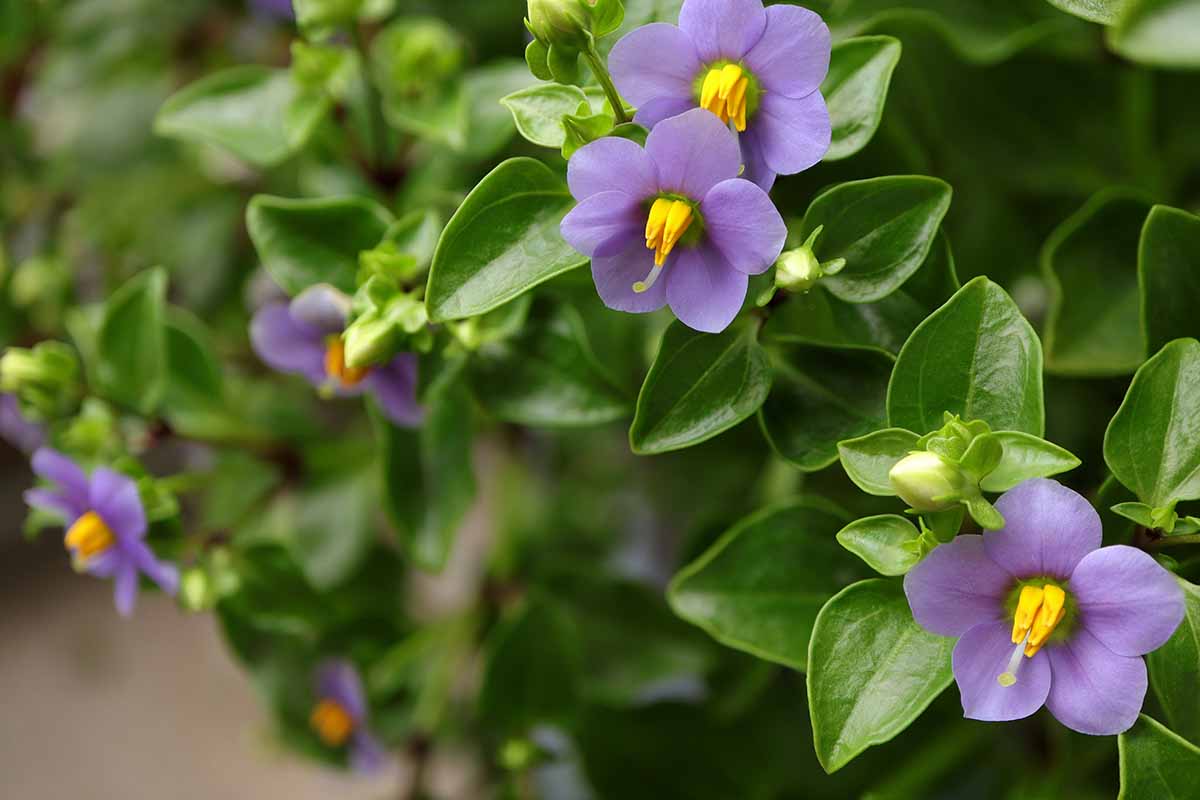
Persian violets are also not happy in direct light, which will scorch their leaves and may burn the blooms.
Anywhere in your home that has bright, indirect light will be perfect for these plants. A few feet away from an east- or south-facing window would be ideal.
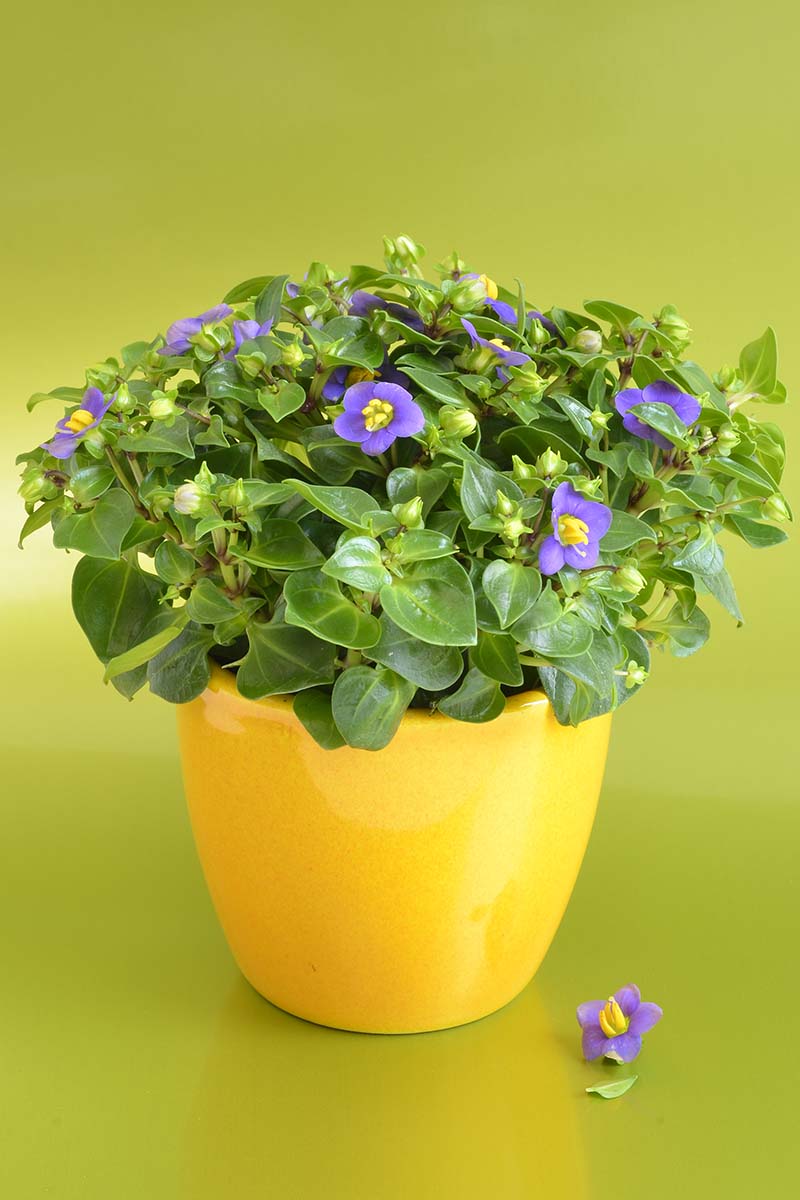
Provide consistent, even moisture, and it’s best to use room-temperature water as cold liquid can shock the plants.
To check if your plants need to be watered, stick your index finger into the soil.
If it is dry up to your first knuckle, water thoroughly, allowing the water to drain out of the bottom of the container. If the soil is slightly damp, simply use a mist bottle to wet the surface of the media.
Growing Tips
- Maintain indoor temperatures between 60 to 80℉.
- Situate your plants in a location with bright, indirect light.
- Hydrate your plants with room temperature water when the soil dries out an inch below the surface.
Maintenance
Persian violets can add a pop of color and a lovely scent to your home when they are well-maintained.
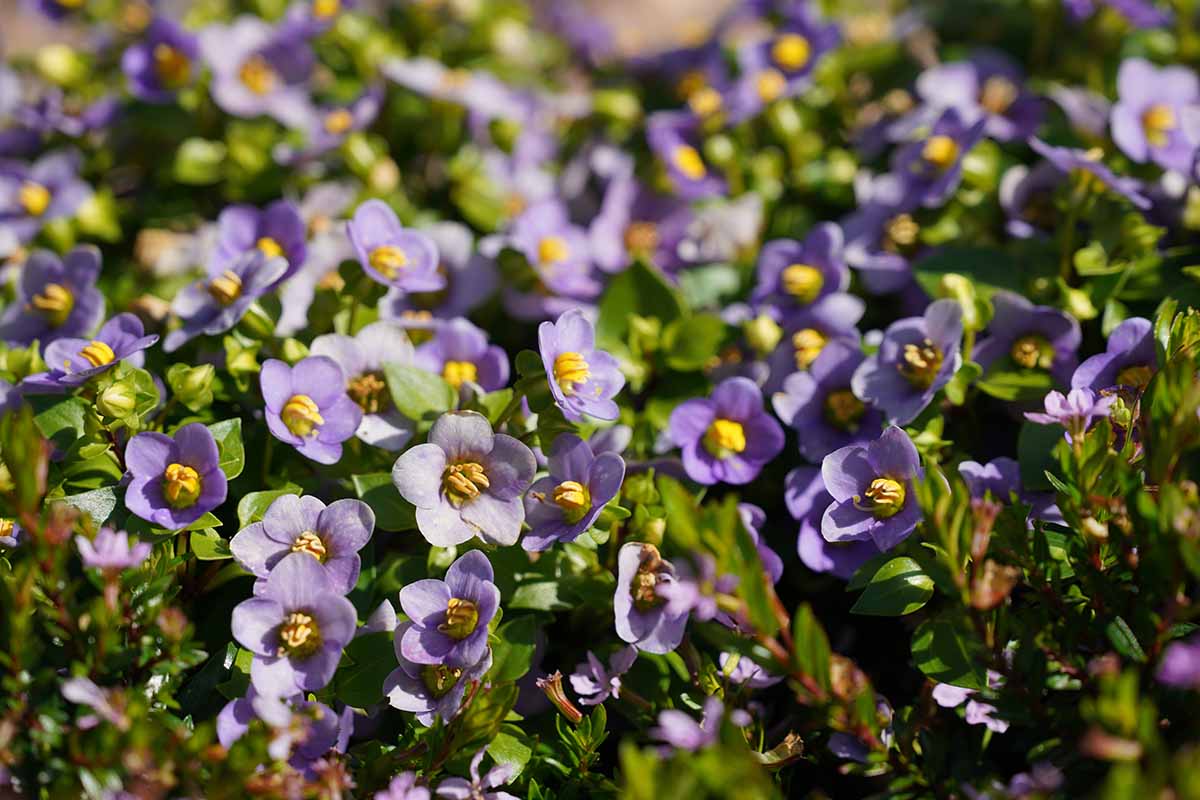
Usually, E. affine does not live long enough to require regular repotting. Once the bright blooms have faded away, you can either pitch the plant entirely or take cuttings to propagate.
Since Persian violets are grown for their bright flowers, you’ll want to deadhead the spent blooms. This will encourage the plant to bloom for longer since it won’t have to pour its resources into the fading flowers.
You can also remove any dead or dying foliage as you notice it.
If some of the blooms or foliage start to lose color, simply use your index finger and thumb to pinch them off of the plant. Do this with any faded blooms and dead leaves on the plant.
A balanced fertilizer should be applied every two weeks during the growing season from early spring to late fall.
Bonide Liquid Houseplant Fertilizer
I would recommend this liquid houseplant fertilizer from Bonide, which has a 10-10-10 ratio of nitrogen, phosphorus and potassium, available via Walmart.
Persian Violet Cultivars to Select
There are a variety of different E. affine cultivars, the most notable difference being the colors of their blooms.
Here are some of my favorites to get you started:
Midget White
‘Midget White,’ as its name suggests, features white flowers and grows to a mature height of about eight inches.

You can find ‘Midget White’ seeds available from Pase Seeds via Amazon.
Royal Dane
The Royal Dane® series features plants with an extended bloom time and a compact, mounding growth habit. They are available in Deep Blue, Deep Rose, and White.

You can find 100 seeds available from Hazzard’s Seeds via Amazon.

Or if blue is more your style, you can find Deep Blue seeds in packets of 100 also from Hazzard’s Seeds via Amazon.
Managing Pests and Disease
Unfortunately, E. affine is not immune to common pests such as aphids and spider mites, or diseases like root rot.
Aphids
Aphids are small, sap-sucking insects that can be green, brown, or even gray in color.
If you see clumps of these pests on the stems or leaves, brown spots of waste or curling leaves, you need to act immediately.
Isolate the affected plant from the rest of your houseplant collection.
You can make a homemade aphid-killer by mixing two to three tablespoons of pure liquid dish soap with warm water in a spray bottle. Avoid soaps with moisturizers or degreasers, as these may harm your plant.
Spray the foliage, not forgetting about the undersides of the leaves, as eggs and larvae will hide there. Monitor your plant and re-spray as needed.
You can also use neem oil, which is available at Tractor Supply.
Be sure to follow the instructions that come with the neem oil product you choose. Some may require you to dilute the solution in water before you apply it to your plant.
Learn more about how to deal with aphids in our guide.
Spider Mites
Spider mites are small arachnids that slowly weaken the plant over time by sucking the sap from the tissues. They form large colonies and their colors range from orange to brown.
In case of a spider mite infestation, the leaves of your Persian violet will likely display yellow or white spots.
To confirm that spider mites are present, you can use a magnifying glass to inspect the undersides of the leaves – you’ll likely see the tiny pests and also the webbing they produce.
You can also tap the leaves while holding a white piece of paper underneath so that you can see any mites that fall.
To get rid of spider mites, you can use the soap and warm water method mentioned above or spray your specimen with neem oil.
Learn more about managing spider mites in our guide.
Disease
Since Persian violets require moist soil, it is easy to overwater, and this creates the perfect conditions for root rot to present itself.
Root Rot
Root rot can either be an abiotic condition where the roots effectively drown in excess water or it can be caused by pathogens in the Pythium or Phytophthora genera.
Either way, it’s pretty serious, and many specimens never recover. If your plant is suffering from root rot, you’ll see wilting, dying foliage. You can check if this is the case by gently removing the plant from its pot and carefully inspecting the roots.
If the roots are brown and squishy and have a foul earthy smell, then unfortunately your Persian violets have root rot and need to be discarded.
Root rot can be avoided by ensuring that your potting medium is well-draining and not overwatering.
Learn more about preventing and treating root rot.
Best Uses for Persian Violets
Persian violets add a dash of color and a pleasing smell to your home. They are ideal as potted specimens on the patio or trailing over the side of a hanging basket.
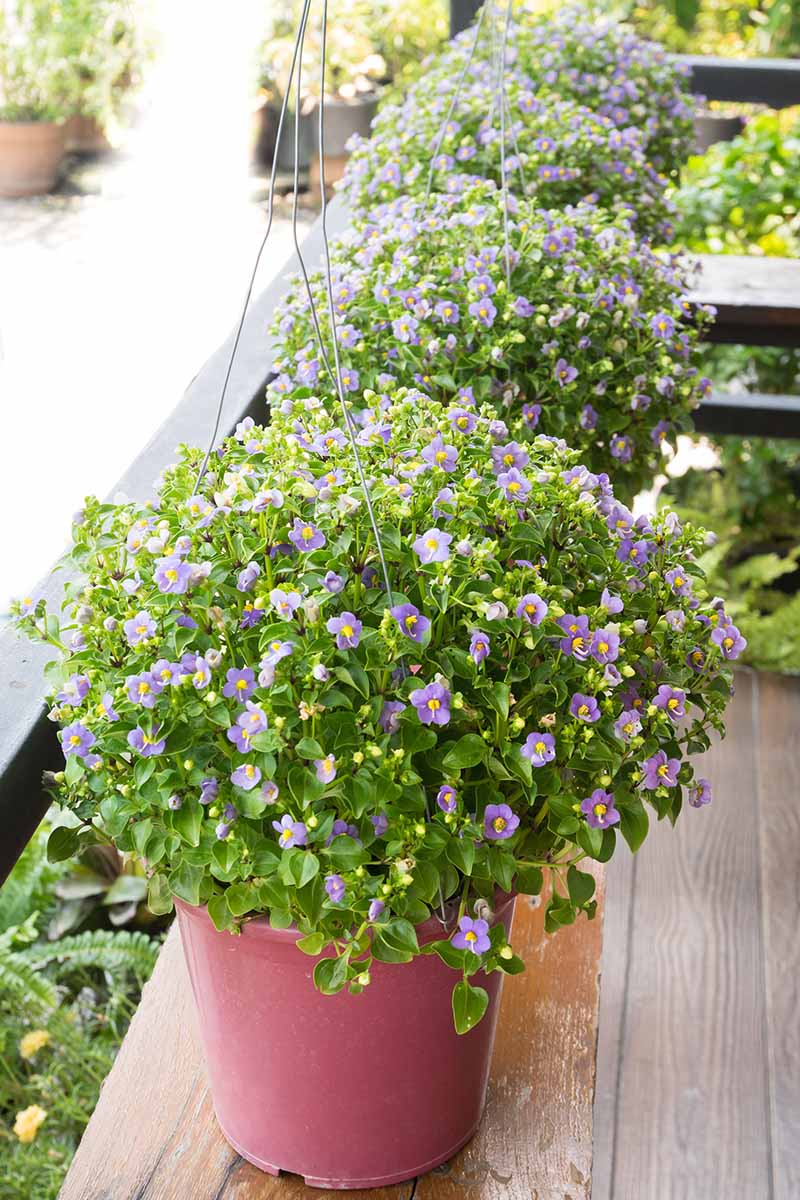
They can be grown outside as ground cover in suitable Zones.
Quick Reference Growing Guide
| Plant Type: | Short-lived perennial/biennial, grown as an annual | Flower / Foliage Color: | Blue, magenta, purple, white / dark green |
| Native to: | Socotra, Yemen | Maintenance: | Low |
| Hardiness (USDA Zone): | 10-12 | Tolerance: | Brief periods at 55°F, direct light |
| Bloom Time: | Spring-fall | Soil Type: | Sand, loam, clay, acidic potting soil, African violet potting mix |
| Exposure: | Bright, indirect light | Soil pH: | 5.0-5.5 |
| Spacing: | 6 inches | Soil Drainage: | Well-draining |
| Planting Depth: | Surface sow (seeds), depth of root ball (transplants) | Uses: | Houseplant, landscape ground cover, hanging baskets |
| Height: | 6-12 inches | Order: | Gentianales |
| Spread: | 7-8 inches | Family: | Gentianaceae |
| Water Needs: | Moderate | Genus: | Exacum |
| Common Pests and Diseases: | Aphids, spider mites; root rot | Species: | Affine |
Vivacious Vibrant Blooms for You
Persian violets are sweet little flowers that add color and texture to your indoor spaces. They are also perfect as a gift for your pet-loving friends and family.
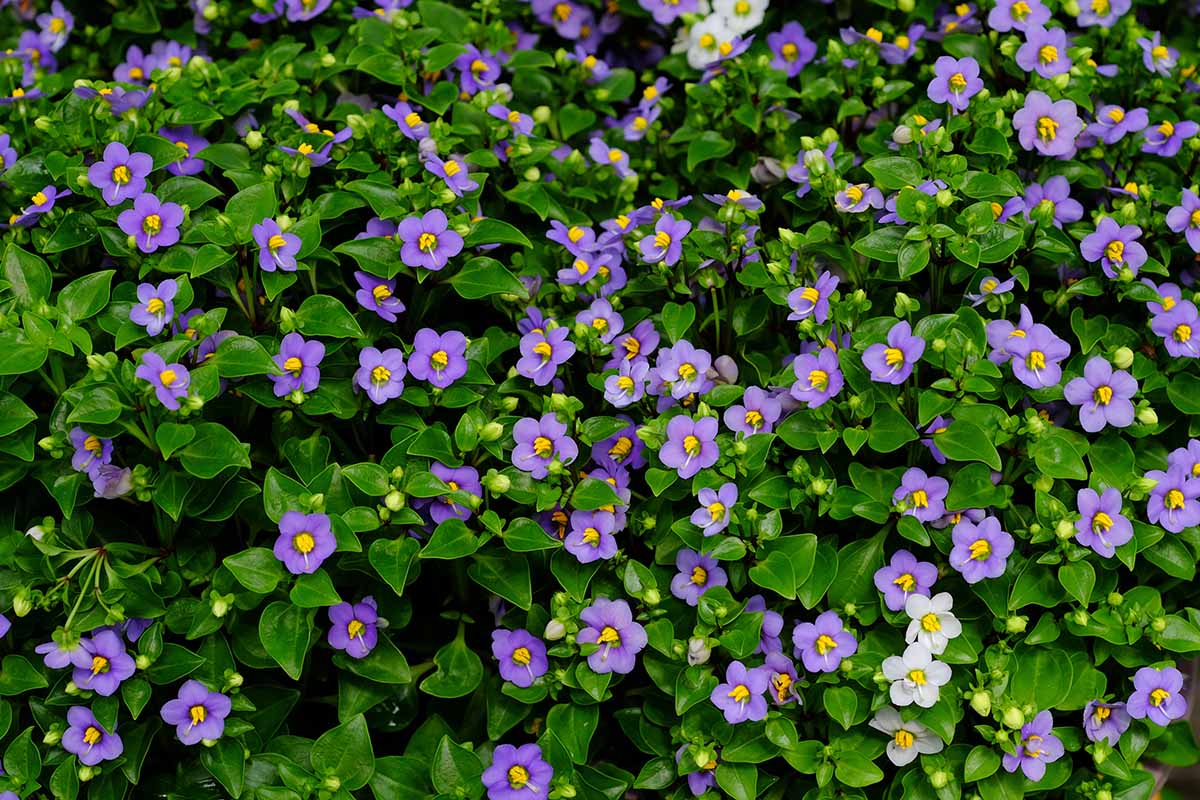
Are you growing Persian violets? Let us know in the comments section below, and feel free to share a picture!
And for more information about growing flowering houseplants, check out these guides next:

